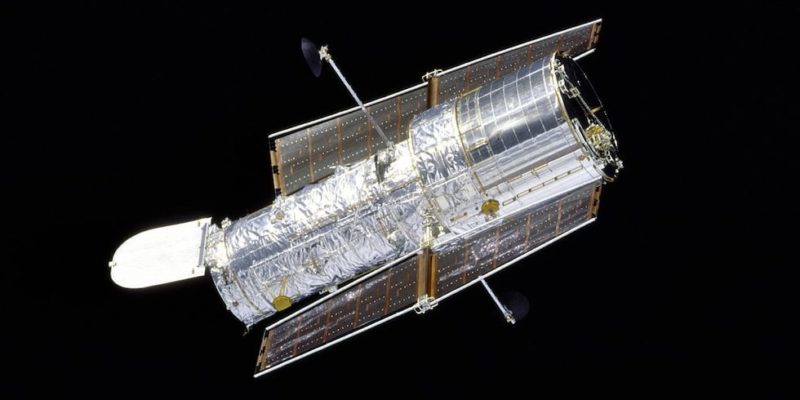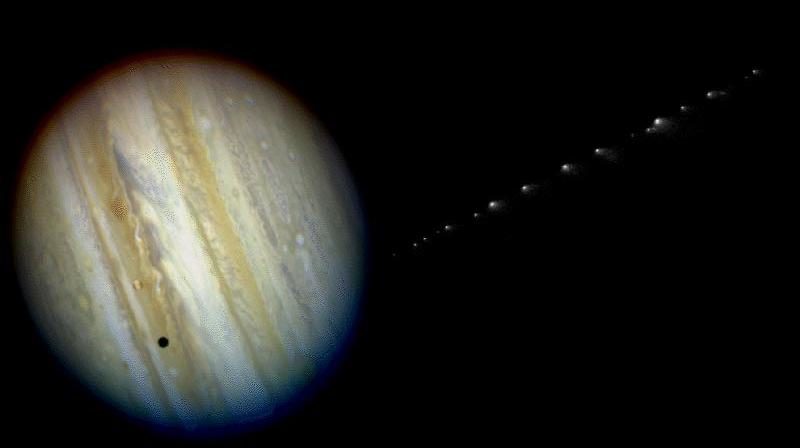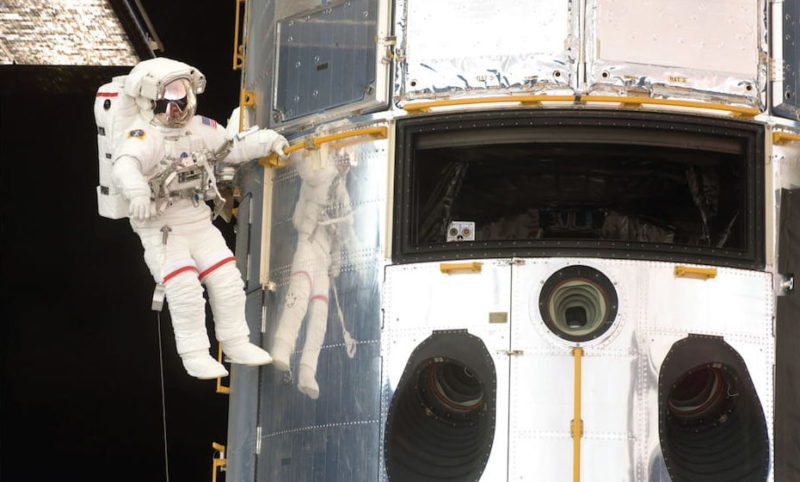We explain what the Hubble Space Telescope is, its history, functions and characteristics. Also, its main discoveries.

What is the Hubble telescope?
The Hubble Space Telescope (HSTof Hubble Space Telescopein English) It is an astronomical observation device located in the outer region of the Earth's atmosphere in orbit around our planet at 593 kilometers high.
It is the main telescope in the world, whose name pays tribute to the American astronomer Edwin Hubble (1889-1953), considered the father of observational cosmology.
The location of the Hubble Telescope at the edge of the planet gives you a privileged position to observe the universe that surrounds us, free of the optical distortions typical of atmospheric gases, since they absorb certain electromagnetic wavelengths and present atmospheric turbulence.
Additionally, in the lower region of the atmosphere clouds and other weather phenomena interfere with vision. Thus, Hubble is not affected by the inconveniences that plague the rest of the large telescopes located on the Earth's surface.
History of the Hubble telescope
The Hubble telescope It was launched into orbit on April 24, 1990 in a joint mission between NASA and the European Space Agency. Its mission was named STS-31, and it was the culmination of more than 20 years of work and more than 2 million dollars of investment. It represented humanity's greatest achievement in astronomical observation since the time of Galileo.
Initially, certain defects in the polishing of the telescope's primary mirror caused the images taken to be out of focus. The worst thing about this is that they could only realize it when the telescope was already in orbit.
So we had to wait three long years to correct this defect, by incorporating an optical correction system (COSTAR), through the trip of a manned shuttle on the STS-61 (SM1) mission.
Since then, five service missions have been carried out:
- SM2 It was carried out in 1997 to replace some instruments and repair the thermal insulation.
- SM3A (1999) and S3MB (2002) Both were maintenance missions.
- SM4 Carried out in 2009 to repair and add instruments to the telescope.
Despite its excellent results, many of Hubble's systems are already beginning to fail, so its replacement by the James Webb Space Telescope (JWST) has been announced whose launch date into space is 2020.
Hubble Telescope Features

Some of the main features of Hubble are:
- It is 593 km high with respect to the sea in a circular orbit around the Earth. It completes one Earth revolution every 96 minutes.
- The telescope It has a total weight of 11 tons approximately, and measures 13.2 meters long and 4.2 meters in diameter. Its cost in 1990 amounted to 2.8 billion US dollars.
- It is a reflecting telescope with a primary mirror of 2.4 meters in diameter. It also has a spectrograph and fine guidance sensors, as well as cameras, four motors and specialized cooling equipment.
- It gets its energy from two solar panels deployed on its sides, and stores it in rechargeable batteries, which allows it to function when the Earth eclipses the Sun or when its panels are not properly oriented towards the light.
- It has an optical resolution of 0.04 arc seconds.
What is the Hubble telescope for?
Like all telescopes, Hubble is used to observe outer space and get an idea of the universe around us.
But in its case, the combination of powerful technical capabilities and a privileged location in space make it one of the main instruments that astronomy and cosmology has to observe the universe and obtain information inaccessible by other means.
In fact, Hubble's findings have been significant from the beginning, to the point that they have led scientists to reevaluate many of their assumptions about the universe.
Hubble Telescope Discoveries

Some of Hubble's main discoveries and contributions are:
- In 1994, discovered clear signs of the presence of black holes in the galaxy M87 50 million light years away. Which contributed to confirming the existence of said astronomical phenomenon.
- That same year took high-quality photographs of comet Shoemaker-Levy 9 on its impact path towards Jupiter.
- In 1995 he took several snapshots of a region near the Big Dipper, over ten consecutive days, and when put together they make up the “Hubble deep field” with more than 3,000 different objects.
- has taken some 500,000 photographs from outer space enough material to fill 1420 optical discs of 6.66 Gb each. It is estimated that more than one million celestial objects have been observed with Hubble.
- Thanks to Hubble, it has been possible to study Cepheids, a group of stars with variable luminosity in periodic terms, which was fundamental for determine the approximate age of the universe.
- In 1995, his photographs of the Orion Nebula made it possible to clarify the evolution of diffuse clouds that would later become stars, that is, they helped to understand how stars are born.
Photos from the Hubble telescope






Continue with: Halley's Comet
References
- “Hubble Space Telescope” on Wikipedia.
- “Launch of the Hubble Space Telescope” on the History Channel.
- “Hubble Space Telescope” in National Geographic Spain.
- “About the Hubble Space Telescope” at NASA.
- “Hubble Space Telescope (Astronomy)” in The Encyclopaedia Britannica.
- Hubble Space Telescope official website.





